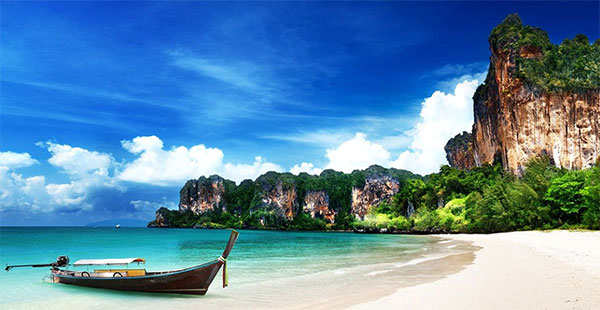To change or not to change?
Imagine, if Masterchef Australia had realised sooner just how effective it could be for a tourism boom for its nation! The top ratings of Masterchef Australia on India’s television channels were all it took for the Australian government to realise that the land of Kangaroos and Koalas could become a popular tourist destination for Indians, according to several case studies. The reality television series from Australia is one of the most popular overseas shows in India and the government took advantage of its popularity by launching tourism campaigns to target Indian tourists.
Tourism as an industry is highly beneficial for a place. Not only does it help in the growth of the local economy, it also helps the place in many other ways. Studies have suggested that people react positively and may consider living at the location, setting up a career or business and perhaps even pursue education in a particular location because of tourism campaigns. People may also consider to retire at a particular destination or to purchase a second home.
But all of this is only possible if the tourism campaign is effective for which an advertising agency has to look beyond the typical features of a country and get creative about how it chooses to depict an entire country. Many case studies suggest that some countries who have introduced their tourism campaigns overtime have managed to change their own perception positively. Let’s look at some tourism campaigns that proved to be a boost for these countries.
UnDiscover Australia:
When the Tourism Australia began a new chapter for its ongoing campaign – There’s Nothing Like Australia, they chose to target the high value travellers of South Asian and South East Asian countries such as India, Singapore, Malaysia and Indonesia. The campaign attempted to show a different side of Australia to challenge some lazy stereotypes about the country. To do this, they went ahead to show the celebrated culinary culture of the country, the nightlife, the urban landscapes, the untouched nature and its art as well as its history. By doing so, they went beyond what are normally the stereotypes and clichés of Australia among tourists – Crocodiles, kangaroos, koalas, beer, cricket and beaches.
Malaysia, Truly Asia:
Malaysia’s tourism slogan of ‘Truly Asia’ campaign highlighted the scenic landscapes and beauty of the country. It showcased the diverse ethnicity of its people with Chinese, Indian or Malay origins and highlighted the wild flora and fauna of its nation. Since its inception in 1999, Malaysia’s Truly Asia campaign has enjoyed a long-term success. The campaign has won more than 25 awards worldwide and according to the country’s tourism ministry, it has resulted in more than a tripling of annual visitors to Malaysia with a record 20.7 million arrivals in 2007. The campaign celebrated the diversity of the nation going beyond what was traditionally advertised in tourism ads of showcasing only the beaches, nightlife or shopping.
Amazing Thailand:
The Amazing Thailand campaign positioned the country as a sanctuary of pleasure for tourists and visitors. It invited people from other countries to visit the ‘Land of Smiles’ as Thailand is known, in order to enjoy the natural environment and its cultural heritage. Later on the Thailand’s tourism authority adapted the campaign to promote the nation’s culinary delights, recreational and shopping facilities. The campaign was pitched in 1997 and after its roll-out, it enjoyed a considerable success. According to media reports, the number of tourists to Thailand rose over 7% in 1998 and rose 11% in the first half of 1999. To keep things fresh every year, the Tourism Authority of Thailand decided to to showcase different themes under the same campaign – sometimes going for value for money and other times choosing royal festivities. Since then Thailand has seen a rise in visitors from China, Russia, India and Laos – all of which individually account for almost a million tourists visiting Thailand. 2013 was the best year for tourism in Thailand with earnings from tourism crossing the one trillion mark, (in Thai Baht) for the first time. In 2015, Thailand’s tourism industry hit its highest record ever, with 29.8 million visitors entering the country for travel or business purposes.
Incredible India:
In 2002, the Government of India started a marketing campaign – Incredible India – with an aim to boost tourism in the country and project it as a credible tourist location. The campaign depicted the diversity in India - of the people, the customs and even the topography. Other facets of Indian culture and history such as yoga, spirituality, festivals and monuments were also highlighted. According to case studies, the campaign’s success led to a 16% increase in tourists in its first year. Foreign tourists in India increased from 2.38 million in 2002 to 7.7 million in 2014. The campaign also increased India’s global visibility and earnings rose from $3 billion (2002) to $11.5 bn in 2008, as per media reports.
Changing the perception :
The success of the tourism campaigns of Australia, Malaysia, India and Thailand suggest that effective tourism advertising and a strategic branding by a creative agency can change the perceptions or stereotypes attached to a country, bring in more visitors and therefore increase earnings and boost the economy.


